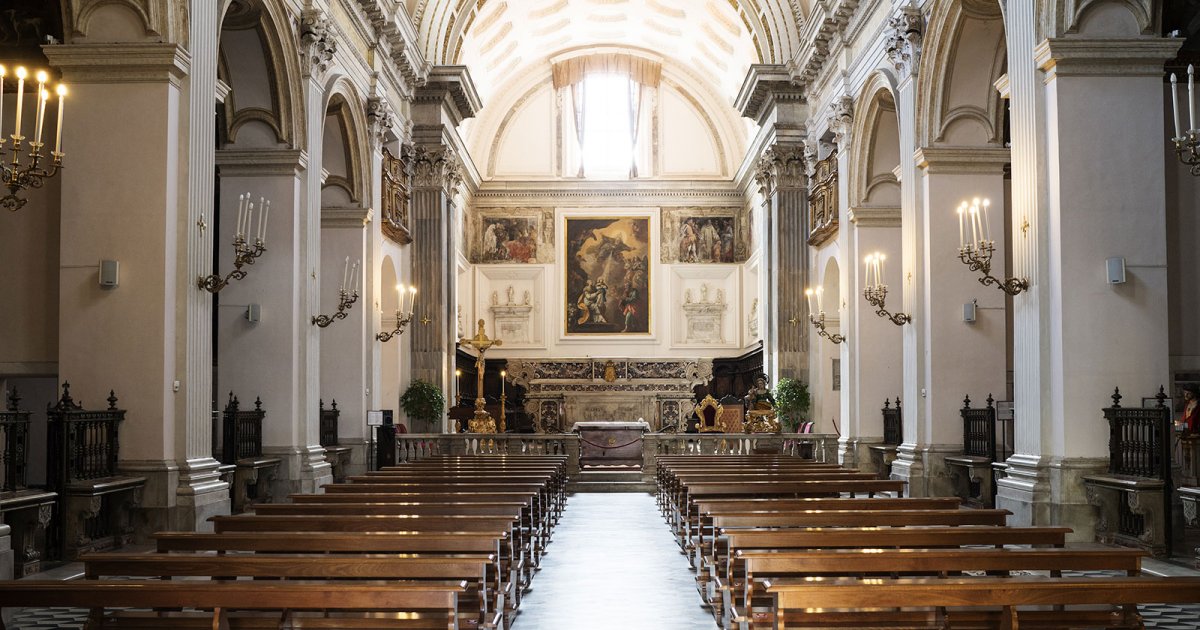CHURCH OF MONTEOLIVETO (SANT'ANNA DEI LOMBARDI), Tour
 Language: English / USA
Language: English / USA
Even though the church was heavily damaged by bombardments in World War II, Monteoliveto Church has preserved its truly exceptional artistic heritage, which is entirely hidden behind its quaint façade.
As soon as you enter, to the right just beside the atrium you'll find the Correale Chapel built at the end of the 1400s by the brothers Giuliano and Benedetto da Maiano: a perfect jewel of Florentine humanism embedded in the heart of Naples. Giuliano is to thank for the clear architectural layout, while Benedetto made the remarkable, light-colored marble altar depicting the Annunciation, which is a worthy rival of any of Botticelli's and Filippino Lippi's most sophisticated creations.
Still on the right side, cross through three rooms decorated with fourteenth and fifteenth-century sculptures and frescoes to reach the Oratory of the Holy Sepulcher. Here you can admire the statuary group titled Compianto su Cristo Morto, or Lamentation: eight full-size statues made by Guido Mazzoni, an amazing terracotta sculptor from Modena who had moved to work in the court of Alfonso II of Aragon.
This statuary group is one of his greatest masterpieces, and in it you can recognize Alfonso II in the thick, bald Joseph of Arimathea, as well as the features of his father Ferdinando Primo in Nicodemus's stunned features.
Now pass through the Chapel of the Assumption (where you'll see a monk frescoed by Giorgio Vasari) to reach the Old Sacristy, which was originally the monastery's refectory.
The ceiling of this rectangular room is divided into regular squares and was fancifully frescoed by Giorgio Vasari with the personification of Christian virtues, figures, symbols, and elegant decorations. The bright and well-preserved colors cheerfully mesh with the warm tones of the wooden panels made by the Olivetan monk Giovanni da Verona, an absolute inlay specialist. Perhaps no other artist has ever been able to match the chromatic nuances of wood with equal finesse, creating images suspended between fantasy and reality, and between truth and deception. As is often the case in this kind of workmanship, the panels play with an optical illusion, simulating half-opened doors where you can make out liturgical furnishings, sacred objects, and musical instruments.
FUN FACT: the panels of the sacristy also simulate "windows" opening onto landscapes and beautiful architectures; some of them are entirely invented, while others are careful depictions of actual views, such as two of Castel Nuovo.
And with this we have finished our tour of Monteoliveto Church. MyWoWo thanks you for staying with us, and will see you at the next Wonder of the World!



